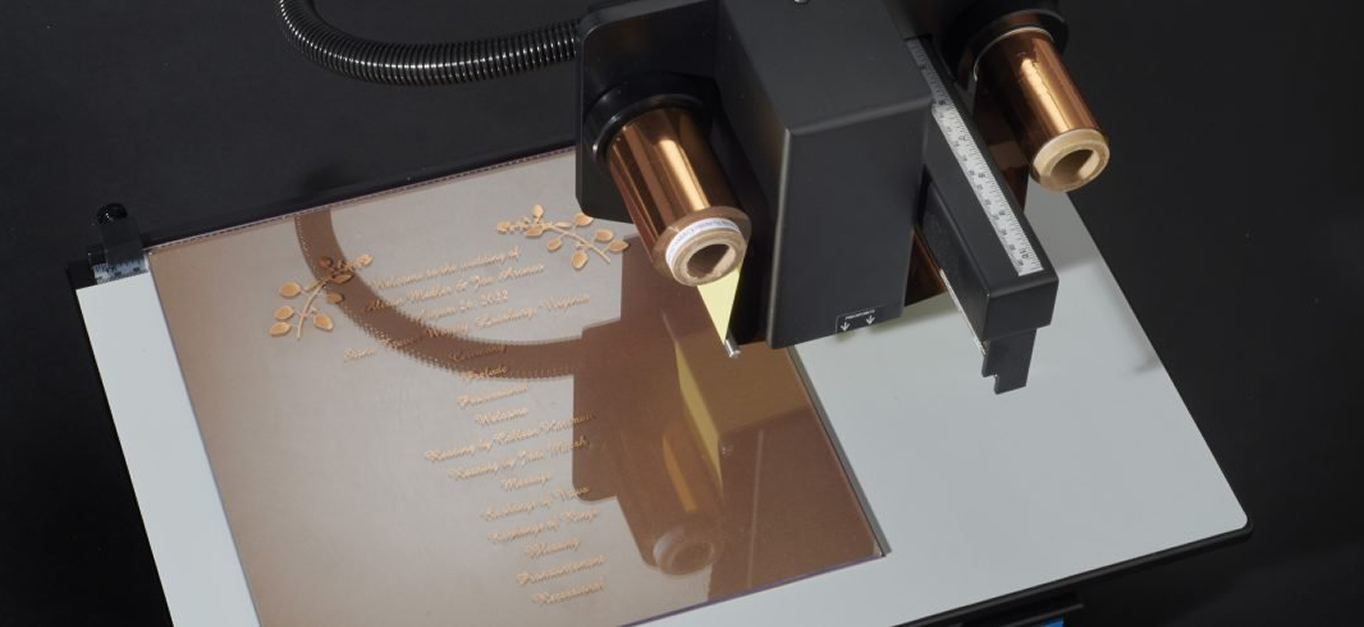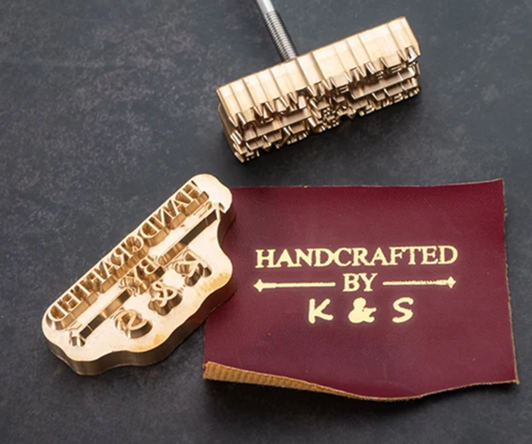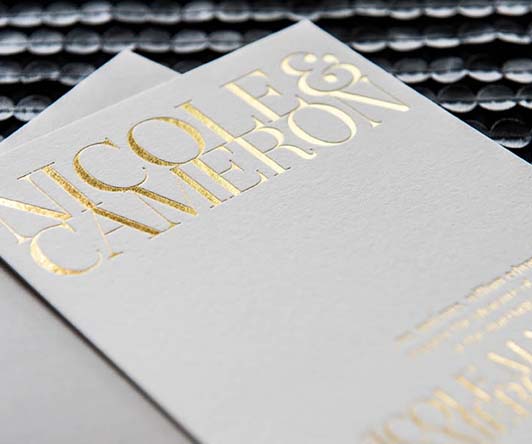

What is the Hot Foil Stamping Imprint Method?
Hot foil stamping is a specialized printing technique that uses heat, pressure, a metal die, and foil to transfer designs, logos, or text onto a surface. This process involves placing a foil—often metallic, glossy, or matte—between the die and the product. When heat and pressure are applied, the foil adheres to the material in the shape of the design. The result is a clean, sharp, and often luxurious imprint that stands out visually and tactilely.
Hot foil stamping is particularly popular for adding metallic finishes, such as gold or silver, to products, making it a preferred method for high-end branding and decorative purposes.
Why and When is Hot Foil Stamping Used?
Hot foil stamping is chosen for its ability to create striking and durable designs that add a touch of elegance or sophistication. Its versatility allows it to be used across various industries, from luxury packaging to promotional items.
This method is ideal when a product needs to stand out with a high-quality, professional finish. For example, it’s commonly used in premium packaging for products like perfumes, chocolates, and wines. Wedding invitations, certificates, and business cards often feature hot foil stamping to enhance their appeal with metallic or glossy effects. Additionally, it’s used for branding on durable items like leather goods and industrial parts where long-lasting imprints are necessary.
Advantages of Hot Foil Stamping
One of the most notable benefits of hot foil stamping is its ability to produce a premium and visually appealing finish. The metallic or shiny effect created by this method is unmatched, providing an elegant and luxurious look. Furthermore, hot foil stamping produces highly durable imprints that resist fading, scratching, and wear, making it an excellent choice for products requiring long-lasting branding.
Hot foil stamping is also highly versatile. It can be applied to a wide range of materials, including paper, leather, plastic, and fabric. This makes it suitable for various products, from notebooks and ribbons to packaging and promotional items. The process is highly customizable, offering different foil colors, finishes, and textures to fit specific design requirements.
Challenges and Limitations
While hot foil stamping has many advantages, it also has limitations. One of the primary challenges is cost. The setup for hot foil stamping involves creating custom metal dies and sourcing specialty foils, which can make the process expensive, especially for smaller production runs. This method also requires time for die creation and setup, which might not be ideal for projects with tight deadlines.
Additionally, hot foil stamping is not well-suited for complex, multicolored designs. Each color requires a separate die and stamping process, which can increase costs and production time. Furthermore, while it works well on many materials, delicate or heat-sensitive materials may not withstand the heat and pressure involved in the process.
Applications and Materials
Hot foil stamping is a versatile method that can be applied to various materials and products. Commonly used materials include:
• Paper and Cardstock: Frequently used for luxury packaging, greeting cards, certificates, and business cards.
• Plastics: Applied to items such as cosmetic packaging, electronic components, and automotive parts.
• Leather: Used for personalizing wallets, journals, belts, and other high-end leather goods.
• Fabric: Commonly seen on ribbons, promotional bags, and labels.
• Wood: Employed in decorative branding for promotional or artisanal products.
The process adds a unique, eye-catching touch to products and creates a high-end feel that elevates their perceived value.
Hot foil stamping is a powerful imprint method that combines heat, pressure, and foil to create luxurious, durable designs. Its ability to produce vibrant metallic or glossy effects makes it a popular choice for high-end branding and decorative applications. While the method requires careful consideration of costs and material compatibility, its aesthetic and functional advantages often outweigh its limitations.
This technique is ideal for businesses and designers looking to create a lasting impression, whether through luxury packaging, elegant stationery, or durable promotional items. By understanding its strengths and challenges, hot foil stamping can be effectively applied to enhance the quality and appeal of various products.





